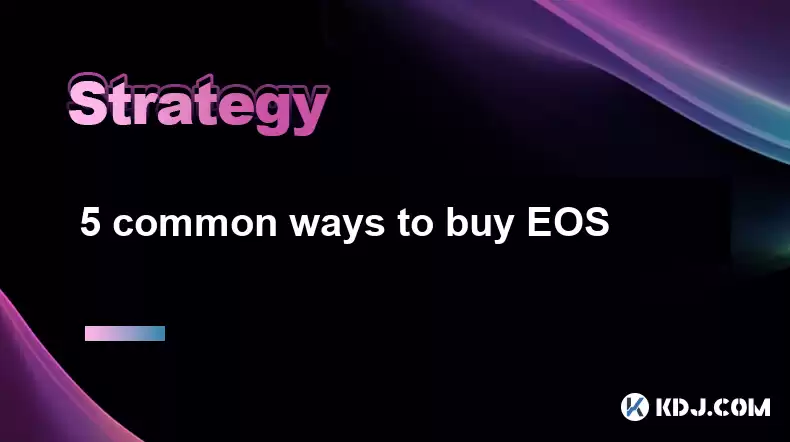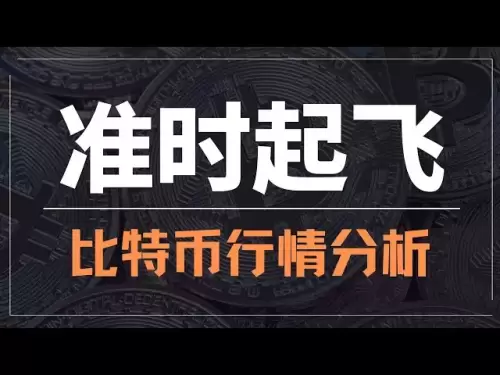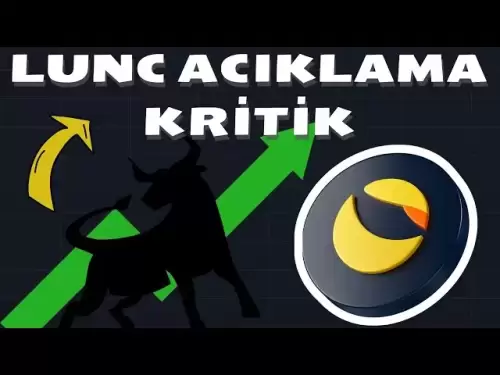-
 Bitcoin
Bitcoin $117300
1.93% -
 Ethereum
Ethereum $3866
5.21% -
 XRP
XRP $3.109
3.81% -
 Tether USDt
Tether USDt $1.000
0.01% -
 BNB
BNB $781.5
1.52% -
 Solana
Solana $173.0
2.95% -
 USDC
USDC $0.9998
0.00% -
 Dogecoin
Dogecoin $0.2181
6.31% -
 TRON
TRON $0.3403
0.93% -
 Cardano
Cardano $0.7683
3.91% -
 Hyperliquid
Hyperliquid $40.08
5.09% -
 Sui
Sui $3.742
7.38% -
 Stellar
Stellar $0.4152
4.69% -
 Chainlink
Chainlink $18.40
10.03% -
 Bitcoin Cash
Bitcoin Cash $580.6
2.21% -
 Hedera
Hedera $0.2543
4.25% -
 Ethena USDe
Ethena USDe $1.001
-0.01% -
 Avalanche
Avalanche $22.94
3.52% -
 Litecoin
Litecoin $121.8
2.24% -
 UNUS SED LEO
UNUS SED LEO $8.955
-0.41% -
 Toncoin
Toncoin $3.330
3.03% -
 Shiba Inu
Shiba Inu $0.00001270
2.97% -
 Uniswap
Uniswap $10.34
6.42% -
 Polkadot
Polkadot $3.805
3.86% -
 Dai
Dai $1.000
0.01% -
 Bitget Token
Bitget Token $4.429
1.80% -
 Cronos
Cronos $0.1495
4.65% -
 Monero
Monero $255.6
-9.08% -
 Pepe
Pepe $0.00001096
4.40% -
 Aave
Aave $282.9
7.85%
5 common ways to buy EOS
You can buy EOS through exchanges, P2P platforms, DEXs, EOS-specific wallets, or Bitcoin ATMs, each method offering unique advantages and considerations.
Apr 10, 2025 at 01:14 am

When it comes to purchasing EOS, one of the prominent cryptocurrencies in the blockchain ecosystem, there are several methods you can use. Each method has its own set of advantages and considerations. In this article, we will explore five common ways to buy EOS, providing a detailed guide on how to navigate each option effectively.
Using Cryptocurrency Exchanges
Cryptocurrency exchanges are among the most popular platforms for buying EOS. These platforms allow you to trade various cryptocurrencies, including EOS, using other cryptocurrencies or fiat currencies.
- Choose a reputable exchange: Start by selecting a well-known and reputable exchange that supports EOS trading. Some popular options include Binance, Coinbase, and Kraken.
- Create an account: Sign up for an account on the chosen exchange. This typically involves providing personal information and verifying your identity through a KYC (Know Your Customer) process.
- Deposit funds: After your account is set up, deposit funds into your exchange wallet. You can usually do this using a bank transfer, credit/debit card, or by transferring another cryptocurrency.
- Trade for EOS: Navigate to the trading section of the exchange and find the EOS trading pair you want to use. Place a buy order for EOS, specifying the amount you want to purchase and the price you're willing to pay.
- Withdraw EOS: Once the trade is complete, you can withdraw your EOS to a personal wallet for added security.
Using Peer-to-Peer Platforms
Peer-to-peer (P2P) platforms offer a more decentralized way to buy EOS, allowing you to trade directly with other individuals.
- Select a P2P platform: Choose a reliable P2P platform that supports EOS, such as LocalCryptos or Paxful.
- Create and verify your account: Sign up for an account and complete any required verification steps.
- Browse listings: Look through the available listings to find a seller offering EOS at a price and payment method that suits you.
- Initiate a trade: Once you've found a suitable listing, initiate a trade by clicking on the listing and following the platform's instructions. You'll typically need to send payment to the seller and wait for them to release the EOS to your wallet.
- Complete the transaction: After the seller confirms the payment, the EOS will be released to your wallet, and the transaction will be complete.
Using Decentralized Exchanges (DEXs)
Decentralized exchanges (DEXs) provide a way to buy EOS without relying on a centralized intermediary, offering greater privacy and control over your funds.
- Choose a DEX: Select a DEX that supports EOS trading, such as Uniswap or SushiSwap.
- Connect your wallet: You'll need to connect a compatible cryptocurrency wallet to the DEX. This can usually be done through a browser extension or directly on the DEX's website.
- Add liquidity or trade: If you want to trade for EOS, navigate to the EOS trading pair and enter the amount you want to buy. If you're adding liquidity, you'll need to deposit both EOS and the other cryptocurrency in the pair.
- Confirm the transaction: After entering the trade details, confirm the transaction through your wallet. The trade will be executed on the blockchain, and the EOS will be sent to your wallet.
Using EOS-specific Wallets
EOS-specific wallets often come with built-in exchange functionality, allowing you to buy EOS directly within the wallet interface.
- Choose an EOS wallet: Select a wallet that supports buying EOS, such as Scatter or Anchor.
- Download and set up the wallet: Download the wallet software and follow the setup instructions, which usually involve creating a new wallet or importing an existing one.
- Link a payment method: Within the wallet, find the option to buy EOS and link a payment method, such as a credit/debit card or bank account.
- Purchase EOS: Enter the amount of EOS you want to buy and complete the purchase. The EOS will be credited to your wallet balance.
Using Bitcoin ATMs
Bitcoin ATMs that support EOS provide a convenient way to buy EOS with cash or a debit card.
- Locate a Bitcoin ATM: Use an online directory to find a Bitcoin ATM near you that supports EOS. Some popular directories include CoinATMRadar and Bitcoin.com.
- Prepare your payment: Bring the required amount of cash or a debit card to the ATM.
- Select EOS: At the ATM, select the option to buy EOS and enter the amount you want to purchase.
- Complete the transaction: Follow the ATM's instructions to insert your cash or swipe your debit card. Once the payment is processed, the ATM will generate a QR code or provide an address to send the EOS to.
- Send EOS to your wallet: Use your EOS wallet to scan the QR code or enter the address provided by the ATM. The EOS will be sent to your wallet.
Frequently Asked Questions
Q: Can I buy EOS with a credit card?
A: Yes, you can buy EOS with a credit card on many cryptocurrency exchanges and through some EOS-specific wallets. However, be aware that using a credit card may incur higher fees and may not be available in all regions.
Q: Is it safe to store EOS on an exchange?
A: Storing EOS on an exchange can be convenient for trading, but it's generally safer to transfer your EOS to a personal wallet where you have full control over your private keys. Exchanges can be vulnerable to hacks and may not offer the same level of security as a personal wallet.
Q: Are there any fees associated with buying EOS?
A: Yes, there are usually fees associated with buying EOS, which can vary depending on the method you use. Exchanges typically charge trading fees, while P2P platforms may have transaction fees. Additionally, you may encounter network fees when withdrawing EOS to your wallet.
Q: Can I buy EOS anonymously?
A: Buying EOS anonymously can be challenging due to the increasing regulatory requirements for cryptocurrency exchanges. However, some P2P platforms and Bitcoin ATMs may offer more privacy options, although they may still require some form of verification for larger transactions.
Disclaimer:info@kdj.com
The information provided is not trading advice. kdj.com does not assume any responsibility for any investments made based on the information provided in this article. Cryptocurrencies are highly volatile and it is highly recommended that you invest with caution after thorough research!
If you believe that the content used on this website infringes your copyright, please contact us immediately (info@kdj.com) and we will delete it promptly.
- Bitcoin Reserve, Gold Revaluation, Congress Considers: A New Era for US Financial Strategy?
- 2025-08-08 04:30:12
- KAITO's Momentum: Can It Reclaim Support Amidst Social Media Scrutiny?
- 2025-08-08 04:30:12
- Pi Coin's dApp and AI Potential: Building a Decentralized Future
- 2025-08-08 02:30:12
- Ruvi AI Takes the Lead: Outshining Dogecoin on CoinMarketCap
- 2025-08-08 02:50:12
- Cryptos Under $1: Is Ripple Still the King?
- 2025-08-08 03:50:12
- Cold Wallet, Bonk Price, ICP Price: Navigating the Crypto Landscape in 2025
- 2025-08-08 03:56:12
Related knowledge

How to avoid common crypto investment mistakes?
Jul 13,2025 at 01:35am
Understanding the Risks of Crypto InvestmentInvesting in cryptocurrency can be highly rewarding, but it also comes with significant risks. One of the ...

What is a long-short crypto strategy?
Jul 15,2025 at 10:56am
Understanding the Basics of a Long-Short Crypto StrategyA long-short crypto strategy is an investment approach where traders simultaneously take long ...

What is a long-short crypto strategy?
Jul 11,2025 at 01:28pm
Understanding the Basics of Long-Short Crypto StrategyA long-short crypto strategy is an investment approach where traders take both long and short po...

How to use the RSI indicator for crypto?
Jul 12,2025 at 03:56pm
Understanding the RSI Indicator in Cryptocurrency TradingThe Relative Strength Index (RSI) is a momentum oscillator used to measure the speed and chan...

Is copy trading a good strategy for crypto beginners?
Jul 12,2025 at 08:28am
Understanding Copy Trading in the Cryptocurrency MarketCopy trading is a strategy where novice traders replicate the trades of experienced investors a...

How to build a crypto portfolio with $1000?
Jul 13,2025 at 08:14pm
Understanding the Basics of Cryptocurrency InvestmentBuilding a crypto portfolio with $1000 starts with understanding the fundamentals of cryptocurren...

How to avoid common crypto investment mistakes?
Jul 13,2025 at 01:35am
Understanding the Risks of Crypto InvestmentInvesting in cryptocurrency can be highly rewarding, but it also comes with significant risks. One of the ...

What is a long-short crypto strategy?
Jul 15,2025 at 10:56am
Understanding the Basics of a Long-Short Crypto StrategyA long-short crypto strategy is an investment approach where traders simultaneously take long ...

What is a long-short crypto strategy?
Jul 11,2025 at 01:28pm
Understanding the Basics of Long-Short Crypto StrategyA long-short crypto strategy is an investment approach where traders take both long and short po...

How to use the RSI indicator for crypto?
Jul 12,2025 at 03:56pm
Understanding the RSI Indicator in Cryptocurrency TradingThe Relative Strength Index (RSI) is a momentum oscillator used to measure the speed and chan...

Is copy trading a good strategy for crypto beginners?
Jul 12,2025 at 08:28am
Understanding Copy Trading in the Cryptocurrency MarketCopy trading is a strategy where novice traders replicate the trades of experienced investors a...

How to build a crypto portfolio with $1000?
Jul 13,2025 at 08:14pm
Understanding the Basics of Cryptocurrency InvestmentBuilding a crypto portfolio with $1000 starts with understanding the fundamentals of cryptocurren...
See all articles

























































































